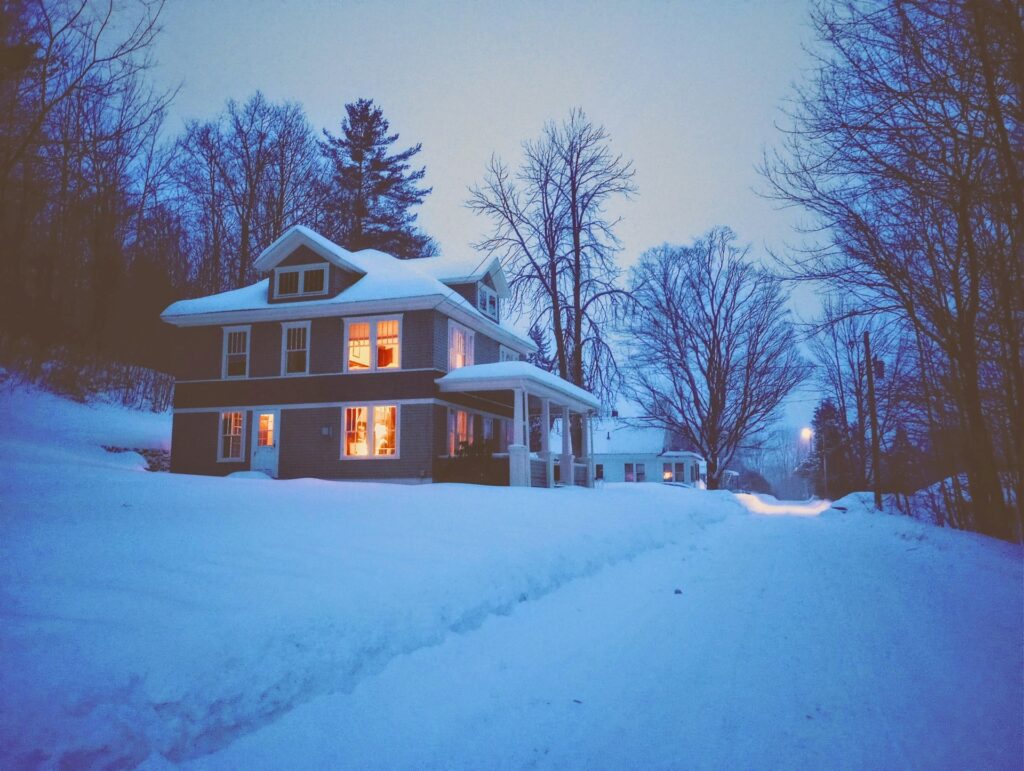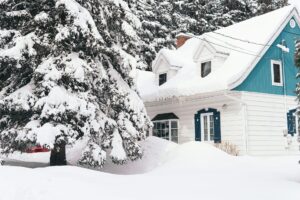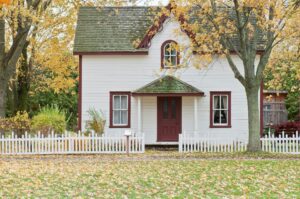Fall in Southwest Portland brings spectacular foliage and crisp air, but it also signals the arrival of months of persistent rain and dropping temperatures. As the wet season approaches, your roof and gutter systems become your home’s primary defense against water intrusion and weather damage. When moisture finds its way past your roofing defenses or gutters fail to channel water away from your foundation, the result can be costly leaks, structural damage, and mold growth.
The transition between late summer and fall offers an ideal window to address vulnerabilities before rain becomes relentless and temperatures make outdoor work uncomfortable. This comprehensive checklist guides Southwest Portland homeowners through essential roof and gutter preparations, helping you protect your investment and maintain a dry, comfortable home throughout the wet and cold months ahead.
Understanding Southwest Portland’s Fall and Winter Weather Patterns
Southwest Portland’s climate presents unique challenges for roofs and gutters. While temperatures rarely reach extreme lows, the combination of persistent moisture, temperature fluctuations, and occasional freeze events creates conditions that test your home’s weather defenses.
Key Weather Challenges
• Extended Wet Season: From October through April, Southwest Portland receives the bulk of its annual rainfall. This prolonged moisture exposure can reveal even minor weaknesses in roofing and gutter systems.
• Temperature Swings: Mild days followed by freezing nights create expansion and contraction cycles that stress roofing materials, seals, and fasteners.
• Heavy Leaf Fall: Portland’s abundant trees drop massive amounts of leaves in fall, quickly overwhelming gutter systems and creating moisture-trapping debris on roof surfaces.
• Moss and Algae Growth: The Pacific Northwest’s damp conditions encourage moss growth on north-facing roof slopes and in consistently shaded areas.
Understanding these patterns helps homeowners prioritize maintenance tasks that address Portland-specific vulnerabilities before problems develop.
Complete Roof Inspection Checklist
A thorough roof inspection in early fall catches issues while weather remains cooperative for repairs. Address these critical areas before the heavy rains begin:
Shingle Condition Assessment
Start with a comprehensive shingle evaluation, looking for signs of wear or damage:
• Missing Shingles: Even a few missing shingles expose underlayment to moisture. Replace them promptly to prevent water infiltration.
• Curling or Cupping: Shingles that curl at edges or cup in the center indicate age-related deterioration or improper ventilation. These compromised shingles allow water penetration.
• Cracking or Splitting: Look for visible cracks running through shingles. Temperature fluctuations and UV exposure cause this damage over time.
• Granule Loss: Check gutters for excessive granules washing off shingles. Significant granule loss indicates shingles nearing the end of their lifespan.
• Algae or Moss Growth: Black streaks (algae) or green patches (moss) trap moisture against shingles, accelerating deterioration.
Flashing Inspection
Flashing, the metal strips sealing roof intersections, is a common leak source when compromised:
• Chimney Flashing: Inspect where flashing meets the chimney base. Look for gaps, rust, or separation from either the chimney or roof surface.
• Skylight Flashing: Check for gaps or deterioration around skylight frames. Water infiltration here often goes unnoticed until ceiling damage appears.
• Roof Valleys: Valleys channel significant water volume, making them high-risk areas. Ensure valley flashing remains intact and free from debris buildup.
• Vent Pipe Boots: Rubber boots around vent pipes deteriorate from UV exposure. Cracked or hardened boots allow water to seep around pipes.
• Step Flashing: Where roof meets vertical walls, step flashing should be secure and properly overlapped. Gaps or missing pieces create direct water entry points.
Roof Penetration Sealing
Every roof penetration, vents, pipes, satellite mounts, represents a potential leak source:
• Check Sealant Condition: Examine caulking and sealant around all penetrations. Dried, cracked, or missing sealant should be replaced with high-quality roofing sealant.
• Vent Covers: Ensure all vent covers remain securely attached and undamaged. Loose or broken covers allow rain to enter directly.
• Unused Penetrations: Old satellite mounts or abandoned pipe penetrations should be properly sealed or removed entirely.
Structural Elements
Beyond surface materials, inspect structural components for water damage:
• Fascia and Soffit: Look for water stains, rot, or peeling paint on fascia boards and soffit panels. These indicate drainage problems or roof edge leaks.
• Sagging or Dipping: Any visible sagging in roof planes suggests structural issues requiring immediate professional assessment.
• Interior Inspection: Check your attic for water stains on decking, signs of moisture, or light penetrating through the roof, all indicators of existing leaks.
Comprehensive Gutter System Preparation
Well-functioning gutters are essential for protecting your home’s foundation, siding, and landscape from water damage. Fall preparation ensures gutters handle Portland’s heavy rainfall effectively.
Thorough Gutter Cleaning
Begin with complete debris removal:
• Remove All Debris: Clear leaves, pine needles, moss, and sediment from gutter troughs. Even small accumulations can create clogs during heavy rain.
• Flush with Water: After removing debris, run water through gutters to identify slow-draining areas or hidden clogs.
• Clean Downspouts: Use a plumber’s snake or high-pressure water to clear downspout blockages. Ensure water flows freely from top to bottom.
• Timing Strategy: Clean gutters twice in fall, once in early October after initial leaf drop, and again in late November after deciduous trees finish shedding.
Gutter System Inspection
With gutters clean, inspect for damage or wear:
• Check for Sagging: Gutters should maintain consistent pitch toward downspouts. Sagging sections indicate loose hangers or accumulated water weight damage.
• Identify Leaks: Look for rust spots, holes, or separated seams. Mark these for repair or replacement.
• Assess Hangers and Fasteners: Ensure gutter hangers remain securely attached to fascia. Replace any that have pulled loose.
• Examine End Caps: Sealed end caps prevent water from pouring off gutter ends. Replace or reseal loose caps.
Downspout Optimization
Proper downspout function is critical for foundation protection:
• Extend Downspouts: Downspouts should discharge water at least 4-6 feet from your foundation. Use extensions or underground drainage pipes to direct water away.
• Install Splash Blocks: Place splash blocks or rock beds at downspout outlets to prevent soil erosion and foundation settling.
• Check Drainage Paths: Ensure water draining from downspouts flows away from your home rather than pooling near the foundation.
• Consider Underground Systems: For homes with recurring drainage issues, underground downspout drainage systems permanently solve water management problems.
Gutter Guard Consideration
Southwest Portland’s heavy tree coverage makes gutter guards worth considering:
Benefits of Gutter Guards: • Dramatically reduce gutter cleaning frequency • Prevent clogs during heavy leaf fall • Reduce ice dam formation in freezing weather • Extend gutter lifespan by reducing standing water
Types of Gutter Guards: • Screen Guards: Affordable mesh screens block larger debris • Micro-Mesh Systems: Fine mesh blocks even small debris while allowing water flow • Reverse-Curve Guards: Water follows curve into gutter while debris falls off • Foam Inserts: Porous foam blocks debris while permitting water penetration
Professional installation ensures guards perform effectively without creating new problems like ice dam formation or water overflow.
Moss and Algae Prevention
Portland’s climate makes roof moss growth nearly inevitable without preventive measures:
Understanding Moss Damage
Moss isn’t merely cosmetic, it actively damages roofing:
• Moisture Retention: Moss acts like a sponge, keeping shingles perpetually damp and accelerating deterioration.
• Shingle Lifting: As moss grows, it pushes under shingle edges, breaking their seal and creating water entry points.
• Freeze-Thaw Damage: Water trapped by moss freezes and expands, cracking shingles and underlayment.
Moss Prevention Strategies
Prevent moss rather than repeatedly treating established growth:
• Zinc or Copper Strips: Install metal strips along roof ridges. Rain washes metal ions down the roof, inhibiting moss growth.
• Trim Overhanging Branches: Increase sunlight exposure and reduce leaf accumulation by trimming tree branches 6+ feet from your roof.
• Improve Roof Drainage: Standing water encourages moss growth. Ensure water flows freely off your roof.
• Professional Treatments: Annual moss prevention treatments create long-lasting protective barriers.
Safe Moss Removal
If moss is already present, remove it carefully:
• Avoid Pressure Washing: High-pressure water forces moisture under shingles and damages granule coating.
• Use Appropriate Chemicals: Eco-friendly moss killers treat growth without harming landscaping.
• Gentle Brushing: After treatment kills moss, gently brush debris from roof working downward (never up, which can lift shingles).
• Professional Removal: For significant moss coverage or steep roofs, professional removal is safer and more effective.
Fall Weather Timing Considerations
Strategic timing maximizes the effectiveness of roof and gutter work:
Optimal Work Windows
• Early October: Ideal for initial inspections and repairs. Weather remains relatively dry and temperatures stay moderate.
• Mid to Late October: Complete gutter cleaning after first major leaf drop but before heavy rains begin.
• Early November: Final gutter check and minor touch-ups before winter weather arrives.
Material Curing Requirements
Many roofing materials require specific conditions for proper installation:
• Sealants: Most require temperatures above 40°F and 24 hours without rain for proper curing.
• Shingle Adhesion: New shingles need warm weather to seal properly. Install before temperatures consistently drop below 50°F.
• Paint and Coatings: Exterior paints and waterproofing coatings require dry conditions and moderate temperatures.
Planning work around weather forecasts ensures repairs perform as intended rather than failing prematurely.
Professional Assessment Benefits
While homeowners can perform many inspection tasks, professional roofing assessments offer significant advantages:
What Professionals See
Experienced roofing contractors identify issues homeowners typically miss:
• Early-Stage Problems: Professionals spot minor issues before they become major leaks.
• Structural Concerns: Trained eyes recognize sagging, water damage, or ventilation problems that compromise roof integrity.
• Hidden Leaks: Using moisture meters and infrared imaging, professionals locate leaks that haven’t yet caused visible interior damage.
• Ventilation Assessment: Proper attic ventilation significantly impacts roof lifespan. Professionals evaluate whether your ventilation system functions effectively.
When to Call Professionals
Schedule professional inspection if you notice:
• Water stains on ceilings or walls
• Musty odors in attic spaces
• Sudden spikes in heating costs
• Visible sagging in roof structure
• Age: roofs over 15 years old should be professionally inspected annually
• After severe weather events
HOMEMASTERS provides comprehensive roof and gutter inspections, identifying issues and providing clear remediation recommendations.
Cost-Effective Maintenance Strategies
Protecting your roof and gutters doesn’t require enormous investment when approached strategically:
DIY vs. Professional Tasks
Homeowner-Appropriate Tasks:
• Regular gutter cleaning
• Minor gutter repairs (sealing small leaks)
• Debris removal from roof surfaces • Visual inspections from ground level
• Clearing moss from easily accessible areas
Professional-Recommended Tasks:
• Walking on steep or high roofs
• Shingle replacement
• Flashing repairs
• Structural assessments
• Extensive moss removal
• Gutter system replacement
Preventive Maintenance ROI
Money spent on fall maintenance prevents far more expensive repairs:
• Gutter Cleaning: $150-300 annually prevents $5,000+ foundation repairs
• Minor Roof Repairs: $300-1,000 prevents $10,000+ roof replacement
• Moss Treatment: $200-500 extends roof life by 5-10 years
• Professional Inspection: $200-400 catches problems before major damage occurs
Emergency Preparedness
Despite thorough fall preparation, winter storms can create unexpected situations:
Prepare for Emergencies
Keep essential supplies and information readily available:
• Roof Tarps: Emergency tarping can prevent extensive interior damage if leaks develop during storms.
• Contact Information: Keep HOMEMASTERS contact information accessible for emergency repairs.
• Documentation: Photograph your roof and gutters while in good condition for insurance purposes.
• Attic Access: Ensure you can easily access your attic to monitor for active leaks during storms.
Storm Response Plan
Know what to do if roof problems develop during severe weather:
- Contain Interior Damage: Place buckets under active leaks and move valuables from affected areas.
- Document Everything: Photograph damage for insurance claims.
- Temporary Measures: If safe, place tarps over compromised areas until professional repairs can be completed.
- Contact Professionals: Call for emergency service rather than attempting dangerous roof access during storms.
Frequently Asked Questions
How often should I clean my gutters in Southwest Portland?
At minimum, clean gutters twice in fall (early and late) and once in spring. Homes with significant tree coverage may require additional cleanings. Installing gutter guards can reduce maintenance frequency.
What’s the average lifespan of a roof in Portland’s climate?
Asphalt shingle roofs typically last 20-30 years in Portland. Metal roofs can last 40-70 years. Factors affecting lifespan include ventilation quality, moss management, and regular maintenance. Portland’s wet climate can reduce lifespan compared to drier regions if maintenance is neglected.
Should I remove moss myself or hire a professional?
For accessible, minimal moss growth, careful DIY removal is feasible using appropriate products. However, extensive moss coverage, steep roofs, or multi-story homes require professional removal. Improper removal damages shingles and creates dangerous working conditions.
How much should I budget for fall roof and gutter maintenance?
Basic maintenance (gutter cleaning, minor repairs, moss treatment) typically costs $500-1,500 annually. This investment prevents far more expensive structural repairs and extends roof lifespan significantly. Major repairs or replacement obviously cost substantially more but shouldn’t be needed annually if proper maintenance continues.
Taking Action This Fall
Southwest Portland’s fall season offers a critical window for roof and gutter preparation. The relatively dry conditions of early fall make outdoor work feasible, while completing preparations before heavy rains arrive protects your home throughout winter’s wet months.
Begin with thorough inspections of both roof and gutter systems, prioritizing issues that could worsen quickly. Address obvious problems immediately, missing shingles, damaged flashing, clogged gutters, before tackling longer-term improvements like moss prevention systems or gutter guard installation.
For tasks beyond your comfort level or expertise, professional assessment and service ensures work is completed correctly and safely. HOMEMASTERS specializes in preparing Portland-area homes for wet season challenges, offering comprehensive inspections and repairs that protect your investment.
As rain begins to fall in earnest, you’ll appreciate the peace of mind that comes from knowing your roof and gutters are ready. Proactive fall maintenance transforms potential problems into non-issues, allowing you to enjoy Portland’s cozy rainy season from inside your dry, comfortable home.For additional home weatherization guidance, consult resources from the EPA’s weatherization program and Consumer Reports’ home maintenance guides. By taking action now, you’ll protect your home and avoid the stress and expense of emergency repairs during winter storms.




